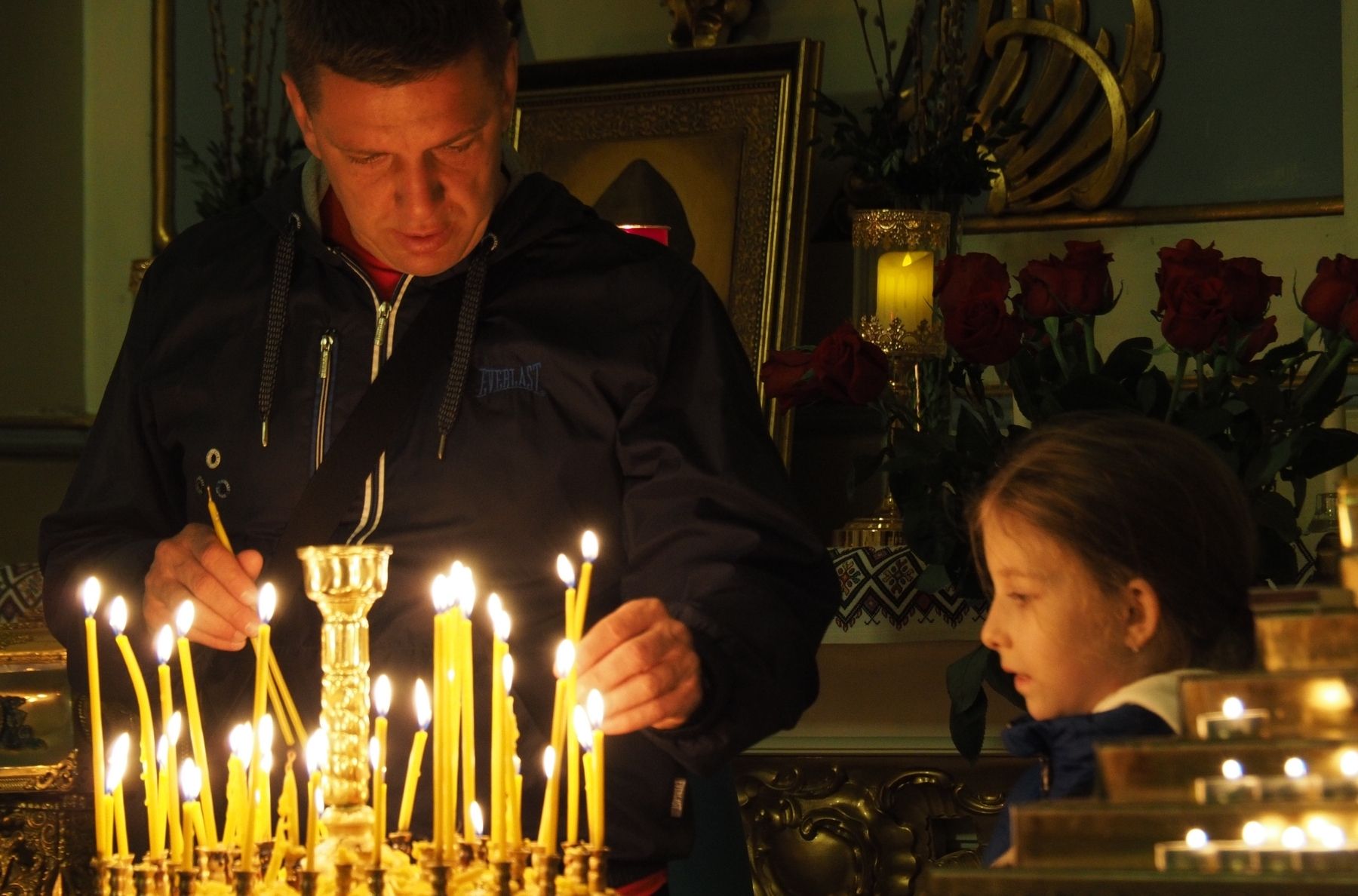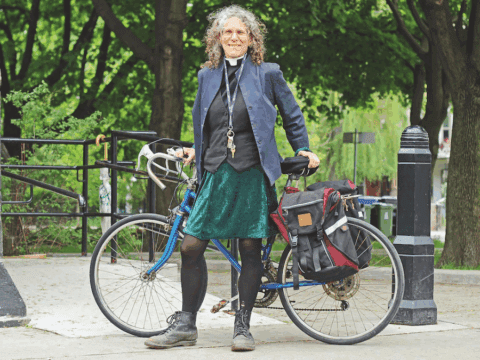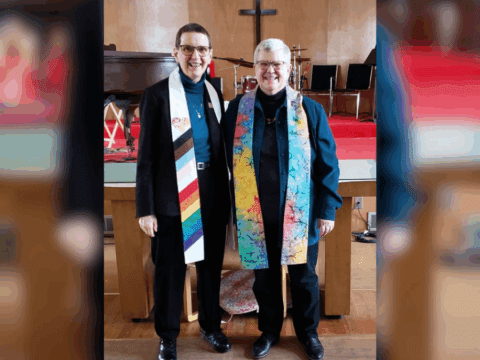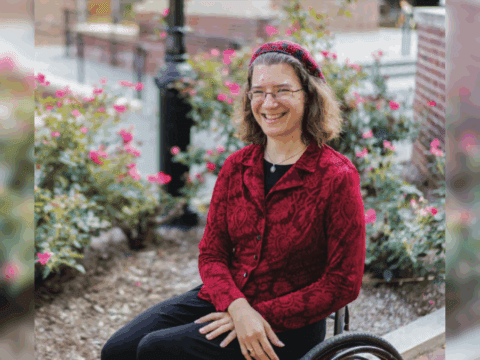LVIV — “Khrystos voskres, Khrystos voskres, Khrystos voskres,” sings Father Pavlo Drozdiak during Easter stichera at St. George’s Cathedral in Lviv, Ukraine on Sunday. He turns to the gathered faithful and repeats the phrase, meaning “Christ is risen” in Ukrainian. They repeat it back.
The acoustics in the church carry the Byzantine Rite hymns beautifully. The cathedral’s high dome, vaulted ceilings and curved second-storey balconies create a sonorous effect, bouncing high and low notes around the church far better than the tiny public address system could. It’s little surprise that the church once hosted a performance of Mozart’s Requiem by his son Franz Xaver Mozart in honour of the 35th anniversary of the composer’s death.
St. George’s Cathedral is the seat of the Lviv Metropolitan See of the Ukrainian Greek Catholic Church, making it one of the most important churches in western Ukraine. Although Ukraine is about 60 percent Eastern Orthodox, Lviv has about the same percentage of Ukrainian Greek Catholics.
Lviv, which saw its first fatalities from Russian strikes last Monday, has so far seen its sacred ground spared, unlike churches and synagogues in cities like Mariupol, Kyiv and Kharkiv.
But the St. George’s Cathedral site has seen war before. The original church, built in the 13th century, stood for 100 years until Poland invaded Lviv and burned it. A Byzantine stone church replaced it for four centuries until it was, in turn, replaced with the current church in the mid-18th century.
Outside, the church’s statuary, renditions of saints that adorn its gates and doors, are carefully wrapped to protect them from shrapnel should any shells fall nearby. The only piece still uncovered is a wooden rendition of Christ on the cross. The rain today makes the blood of his wounds look startlingly wet and real. The outside entrance to the crypt is reinforced with sandbags; the crypt itself is now the church’s makeshift air raid shelter. Grey church cats, the old building’s official mousers, weave into nooks and doorways, dodging the curious children of visitors.
The Russian invasion forced these changes not just on St. George’s Cathedral but all churches in Ukraine. The midnight office, normally the most attended of Easter Sunday’s masses, was held after curfew lifted, rolled together with matins, the morning service timed to end at sunrise. The churches in Lviv opened their doors at times ranging from 6:30 a.m. to 8 a.m.

After a night of blaring air raid alarms — at least one of which fell on Sunday itself — the faithful were in sparse attendance. St. George’s Cathedral had as many empty pews as occupied ones.
Drozdiak, who is also the press secretary of the Lviv Eparchy of the Ukrainian Greek Catholic Church and the city council’s chaplain, said at a Wednesday press conference that the church anticipated this. “How is the life of our church different? We can see it right now. The church has to go beyond our traditional liturgies and services,” he said, emphasizing online services that could be held at the normal times. “Easter’s not only about traditions. It’s not only about the tangible things we can see. Easter is about our faith.”
And that faith was still on display. Although few stayed for the whole mass, a parade of believers came through the cathedral throughout the day’s services, genuflecting and making the sign of the cross at the entrance.
The city is a revolving door during the war; refugees flow east from the front while supplies flow in from the west. The services were no different. Displaced persons and European tourists intermingled with Leopolitan worshippers. Some wore traditional Ukrainian Easter dress, others were dressed casually as they wandered about the church, taking photos and videos of apostles wrapped in plastic and windows reinforced with sandbags on their pilgrimage through the cathedral’s relics.
More on Broadview:
- Ukrainian clergy emphasize fighting over forgiveness of sin this Easter
- Ukraine refugee crisis exposes racism
- I’m ashamed of what some of my fellow Russians believe about Ukraine
“There are little children who come to church with their moms, and our task is to lend a helping hand,” Drozdiak had said Wednesday. “We try to be on their level, we share some goodies with them, we play some games with them. My point is the church must be as open as possible.”
Despite Drozdiak’s earlier statement and the generally relaxed attitude at Sunday’s services, in a moment of stuffy church formality, a priest emerged from a back room and ordered a mother to remove her child’s hat.
It was a moment of minor conflict in a nation torn by war. At the hour when most churches were finishing vespers, the Ukrainian government issued another air raid alert. St. George’s Cathedral is home to the oldest bell in Ukraine, but what rang through the air was the scream of sirens.
***
Matthew Best is a freelance journalist from Toronto currently based out of Ukraine.
Jean Platt is an emerging American journalist based in Lviv with a background in music, art and architecture with a focus on Christian liturgy and church architecture.















